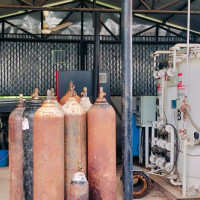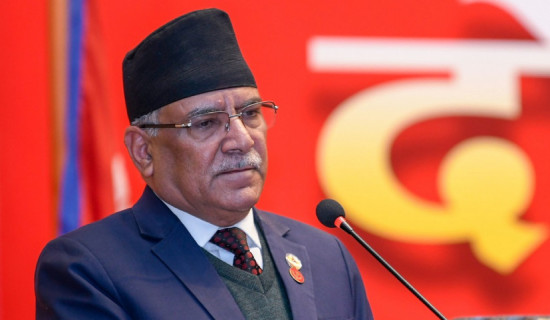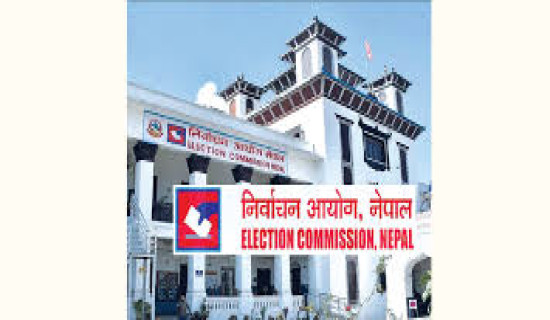- Tuesday, 7 October 2025
Climate Justice in Nepal: From Rhetoric to Reality
Lavish Jung Gurung 
Nepal entered the global environmental discourse more than five
decades ago with its participation in the 1972 Stockholm Conference. Since
then, it has remained an active party to international climate platforms,
including the landmark United Nations Conference on Environment and Development
(UNCED) in Rio in 1992 and subsequent Conferences of the Parties (COP).
However, despite this engagement, Nepal’s environmental policies have largely
remained a top-down affair driven by international commitments and expert
consultations, but often divorced from the needs, voices, and lived realities
of local and marginalized communities. The notion of climate justice though
lacking a single universal definition offers a lens to examine fairness in the
distribution of climate change’s burdens and benefits. It emphasizes the
principle that those least responsible for causing climate change should not be
the ones suffering its most devastating impacts. Yet, in Nepal, this idea
remains on the periphery of policy implementation. The United Nations Framework
Convention on Climate Change (UNFCCC) framework, through the principle of
common but differentiated responsibilities, and voices from COP summits,
highlight equity and justice in climate action. Similarly, organizations like
ActionAid International frame climate justice as part of the broader struggle
for social justice one that recognizes the disproportionate impact of climate
change on marginalized populations. In Nepal, climate justice is still largely
confined to slogans such as “we need grants, not loans” and loosely articulated
demands for compensation under the polluter-pays principle. While the national
discourse acknowledges loss and damage, policies remain inadequate in
addressing the deeper structural injustices exacerbated by climate change.
Nepal’s 2015 Constitution, in Article 30(1), enshrines the right to
live in a clean and healthy environment as a fundamental right. It also
provides for compensation for environmental harm. But this constitutional
promise has yet to be realized through meaningful and enforceable legislation
aligned with climate justice. The Environment Protection Act (EPA), 2019
represents a progressive step, aiming to integrate climate change adaptation
and mitigation into national planning. However, its implementation remains
non-mandatory and discretionary. While it recognizes vulnerable groups, its
failure to mandate accountability, enforce penalties for environmental harm, or
institutionalize the rights of affected populations undermines its potential.
Consider the case of Chure rivers, where unregulated extraction of sand and
boulders continues to destroy local ecosystems and harm vulnerable riverine
communities yet polluters go unpunished, and compensation remains elusive.
Forests, Local Governments, and the Policy Disconnect The Forest Act, 2019
includes provisions related to carbon sequestration and ecosystem services in
line with Nepal’s Paris Agreement commitments. However, it lacks clarity on
carbon credit ownership and equitable benefit-sharing mechanisms for
forest-dependent and Indigenous communities. The Local Government Operation
Act, 2017 gives sub-national governments roles in environmental management, but
their disaster response mechanisms are weak, and climate change adaptation
strategies often ignore the most at-risk including Dalits, Indigenous Peoples,
and women. Similarly, the Disaster Risk Reduction and Management Act, 2017,
while establishing institutional structures for disaster response, fails to
secure land tenure rights for resettled families and does not mainstream gender
perspectives or the resilience needs of climate-vulnerable groups.
Climate Regulations: Gaps in Equity and Intersectionality
While the Environment Protection Regulations, 2020 introduce public
participation and a gender-sensitive framework, they fall short of adopting an
intersectional approach overlooking the compounded vulnerabilities experienced
by landless and Indigenous women, who are often at the frontlines of
environmental injustice. Climate finance provisions remain vague and inadequately
responsive to grassroots demands. The Solid Waste Management Rule, 2013,
although essential for mitigation through Greenhouse Gas (GHG) reduction, is
silent on polluter accountability, compensation mechanisms, or justice for
impacted communities.
Still a Work in Progress The National Climate Change Policy, 2019
ambitiously commits to allocating 80% of international climate finance to the
local level and includes the voices of marginalized groups. However, it views
women and disadvantaged communities as beneficiaries rather than agents of
change, reflecting a top-down charity model rather than a rights-based
approach. The National Land Policy, 2019 and National Environment Policy, 2019
promote tenure rights and environmental justice, respectively. Yet,
coordination gaps and lack of transparency obstruct their implementation. The
National Water Resources Policy, 2020 includes social safeguards and equity in
resource sharing but suffers from weak inter-agency collaboration and poor
public accessibility to key impact assessments. Finally, the Agriculture
Policy, 2004, though outdated, recognizes the climate vulnerability of marginal
farmers and seeks to enhance their adaptive capacities. It highlights women’s
participation but lacks integration with current climate resilience frameworks.
"Nepal’s security institutions including Nepal Police, the Armed
Police Force, the Nepal Army, local people, frontline volunteers, and
community-based organizations have repeatedly demonstrated resolve and
dedication during environmental crises. Their role in search and rescue
operations, disaster relief, and emergency coordination has been commendable.
However, in the absence of a people-centered climate justice framework and a
strong enforcement mechanism, even the most efficient disaster responses remain
reactive strategies rather than proactive, preventive solutions.
A Call for Rights-Based Climate Action Nepal’s legislative and policy
frameworks exhibit encouraging intent but climate justice cannot remain a
rhetorical aspiration. It must be institutionalized through enforceable laws,
localized through participatory planning, and humanized through an
equity-focused approach that places the most vulnerable at the center. Climate
change is not just an environmental issue it is a profound social and ethical
crisis. If Nepal wishes to lead by example in South Asia and beyond, it must
bridge the gap between policy and people, between promise and practice, and
between sustainability and justice.



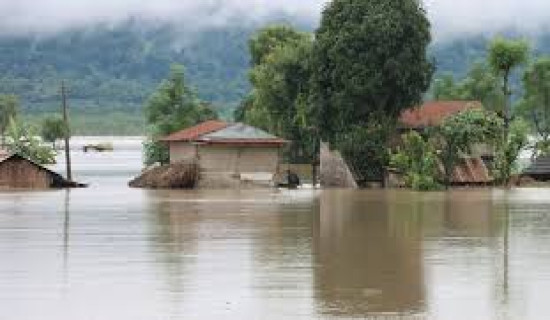


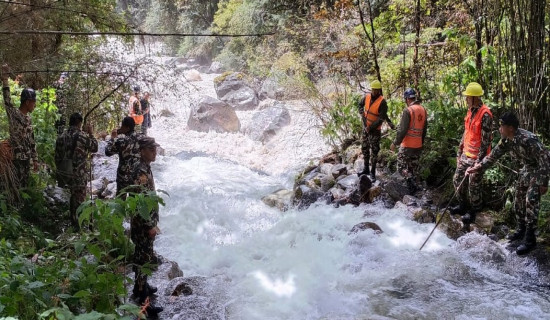
-square-thumb.jpg)
